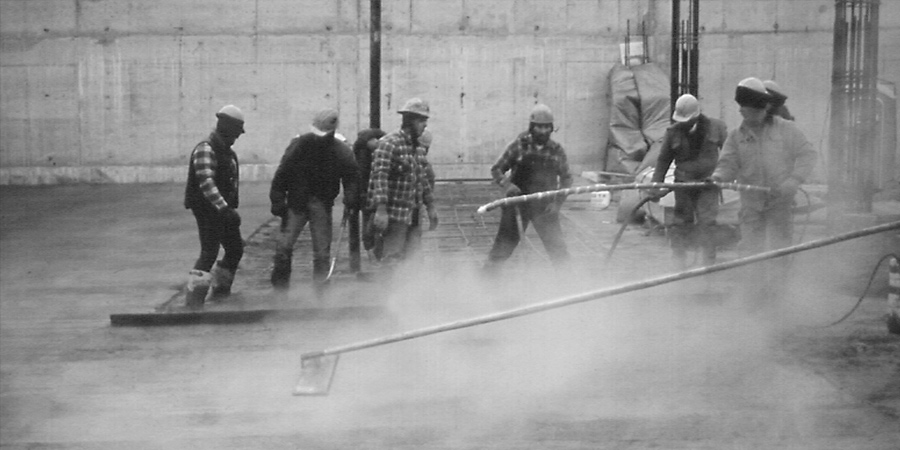Real-world impact of admixtures on sustainability

Concrete admixtures can be used to reduce cement content, permit greater use of supplementary cementitious materials (SCMs), and even increase resistance to the environment to extend the lifespan of structures. Admixtures also have the potential to effect a reduction in the CO2 emissions associated with concrete production. However, the impact of admixtures on sustainability can be complex, and involve many variables. The following examples, summarised in the accompanying table, illustrate several ways that admixtures can be used to reduce the CO2 footprint of concrete.
Use of superplasticisers in SCM mixes
Superplasticisers can be used to reduce water in a mix, thereby lowering the effective w/c ratio. Abrams’ water-to-cement ratio law will permit the replacement of cement with supplementary cementitious materials, such as fly ash, while maintaining equivalent strengths. For example, a reference concrete with 350 kg/m3 (590 lb/yd3) of cement and 200 kg/m3 (337 lb/yd3) of water (0.57 w-to-cement ratio) can be treated with a superplasticiser. The water content of the concrete can be reduced to 160 kg/m3 (270 lb/yd3), for a 20% water reduction.
The water reduction allows us to remove 70 kg/m3 (118 lb/yd3) of cement and replace it with 84 kg/m3 (142 lb/yd3) of fly ash, creating a water-to-cementitious ratio of 0.445. Some sand can be added to the mix to maintain equivalent yield.
Even without factoring in the benefits resulting from easier placement and longer structure lifespan, the sum of these changes still results in a concrete with 19% reduction in CO2 emissions. It is clear that higher sustainability can be achieved with higher water reduction, and that there is room for improvement in this direction.
Learn more about concrete admixtures
Use of superplasticisers and accelerators in SCM mixes
In this example we will follow similar methods as above to illustrate how the combined use of superplasticisers and set accelerators can enable more aggressive 50% cement replacements in the above reference concrete mix.
Using a similar dose of superplasticiser, we reduce the water content of the mix to 169 kg/m3 (285 lb/yd3) and the cement content to 175 kg/m3 (295 lb/yd3). The cement removed is replaced with 210 kg/m3 (354 lb/yd3) of fly ash, resulting in a water-to-cementitious ratio of 0.44.
However, this time we are going to use a set accelerator to partially overcome the lower early strengths associated with this high cement replacement level. The later-age strength is typically not an issue for fly ash mixes. The sum of these changes results in a concrete with a very significant 34% reduction in CO2 emissions. If allowance for slower strength development were possible, thus allowing less accelerator use, the CO2 emissions would be further reduced.
Use of air entraining agents
Air entraining agents (AEAs) are surface active agents that function by stabilising small air bubbles in the concrete to provide pressure relief when entrained water expands during freezing. For this reason, AEAs are required by building codes in many freeze-thaw susceptible regions in the world.
Air entraining agents are also useful in imparting workability to low-strength lean concretes. Due to the low paste volume in these concretes, aggregate-aggregate friction is a major obstacle to workability and slump development. When air entrainment is increased a few percentage points, the desired workability can be achieved with slight reductions in cement and water contents, resulting in modest (~3%) reductions in CO2 emissions. However, when factors such as improved durability (as a result of reduced bleeding and better compaction) are accounted for, the environmental impact over the concrete lifecycle can be considerable.
Creative use of concrete admixtures, alone or in combinations, can be used to make significant reductions in CO2 emissions associated with concrete production.
*Environmental assessment comparisons of the concrete were used to determine the CO2 emission reduction.
Tags
- ADVA®
- CONCERA™
- Concrete
- Concrete admixtures
- DARASET
- DCI®
- ECLIPSE®
- MIRA®
- Precast
- Ready Mix
- V-MAR
- VERIFI
